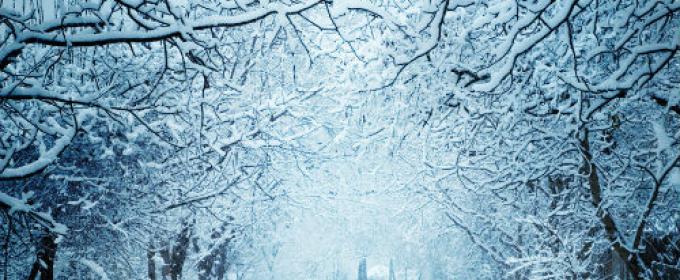
As winter begins its inevitable descent onto the country, many homeowners brace themselves for the annual spike in utility costs. Some homeowners, however, don’t take the cold weather onslaught lying down beneath a pile of comforters. Rather than shiver through the cold or accept higher bills, they take action to save money. They use some tried and true winterization techniques on their homes to keep the cold out and the utility costs down.
Give Windows Some Attention
Windows, especially single pane windows in older houses, let a lot of cold in and a lot of heat out. Minimally, each window should have blinds and curtains. These help to minimize any existing drafts and contain to the cold around the window. Heavier curtains do this more effectively, but even lightweight curtains contribute to the cause. The caulk that holds window panes in place and helps to seal up window frames can deteriorate over time, giving cold air more ways into the house. Removing crumbling caulk and replacing it with an exterior grade caulk fills those holes and saves you money on the bill. Many homeowners also choose to place plastic shrink films over windows during the winter. The shrink film creates another barrier between any cold air seeping in around the window and the interior of the house.
Programmable Thermostats
Programmable thermostats let homeowners decide when to raise or lower the temperature without needing to manually change it every time. Lowering the temperature even a few degrees translates into significantly reduced fuel or electricity consumption. Multiply that for 6-8 hours a day, by 5 days a week, and the savings add up fast. Programmable thermostats, although helpful for anyone, are especially useful for those with predictable schedules.
Check the Doors
Doors can be worse than windows for driving up heating costs, particularly if they aren’t properly winterized. Any door that opens to the outside should have weatherstripping – a narrow strip of felt – along the top and sides of the door frame. The weatherstripping cuts the draft much like the caulk around window frames cut the draft. Of course, it’s impractical to weatherstrip the bottom of the door. Some homeowners opt to buy door sweeps, which help to seal the bottom edge and reduce drafts. The cost-conscious make draft snakes. A draft snake is a tube of cloth stuffed with material that gets pushed against the bottom of the door. Just about any kind of cloth will work as stuffing, and the main requirement for the exterior cloth is that it’s as long as the door is wide.
Furnace Upkeep
Like other machines, furnaces require some periodic upkeep. Assuming no obvious mechanical problems, the main furnace upkeep homeowners need to be mindful of is changing the filter. Furnace filters trap dust and particulates before the air enters the main system. Over time the accumulation of dust and particulates in the filter starts to hamper easy air flow. The furnace works harder to generate and distribute the same amount of heat, draws more electricity and pushes up costs. The furnace manual should specify how often to change the filter, but most require filter changes approximately once-a-month during the winter.
Water Heater
Water heater settings aren’t fixed in stone. Most provide at least at least three heating levels ranging from warm to hottest. The hottest setting generally makes the water hot enough to scald skin. That is much hotter than water needs to be to for normal household functions, such as dishes and showers. Turn the water heater down to the middle setting or, if the water heater provides a temperature scale, to around 120 degrees. It will put a big dent in natural gas or electric heating costs.
Cracks and Crawlspaces
Most homeowners don’t give much thought to cracks in exterior wall or the crawlspace under the house, yet both can drive up heating costs. Make sure the entrance to the crawlspace is covered, either with a small panel on hinges or, minimally, a piece of plywood secured in place. This cuts down on the cold air swirling around under the floor and keeps stray animals from seeking shelter under the house. Even small cracks in walls compromise the building envelope that separates the parts of a home that get heated from the outside world. Treat small cracks or openings in the wall, like those around water spigots or dryer vents with an exterior grade caulk. For larger cracks, expanding foam does the trick.
Pipes
Insulating pipes with basic split-foam, available in most hardware stores, cuts costs and protects the homes from winter weather disasters. Pipes frequently run under the house or in the walls, where they enjoy less protection from external temperatures. This can lead to heat bleeding from the pipes. In the case of hot water, it takes longer for hot water to appear in the sink or shower and forces the water heater to kick on more often. This drives up utility costs. In the case of cold water, if enough heat bleeds off, the water can freeze and the pipes will crack or burst. Replacing broken pipes during the winter always costs a lot, especially if the pipe happens to be inside a wall.
Saving money during the winter doesn’t have to mean dropping thousands of dollars on new heating equipment and replacing windows. Many home winterization tips and techniques are low-cost and aim to maximize the efficiency of the house as it stands. The total savings in utility costs over the course of the winter generally far exceed the modest, up-front investment in winterization materials.







